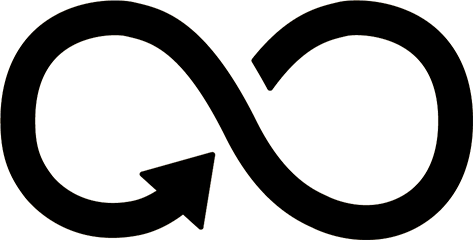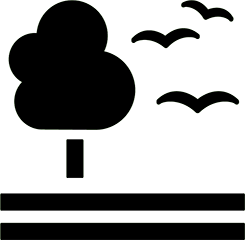UN Sustainable Development Goals Addressed
-

Goal 9: Industry Innovation & Infrastructure
-

Goal 11: Sustainable Cities & Communities
-

Goal 12: Responsible Production & Consumption
-

Goal 15: Life on Land
2021 Global Design Challenge Finalist
This design concept was developed by participants in the Institute’s Global Design Challenge. The descriptions below are from the team’s competition entry materials.
Location: Lviv, Ukraine
Team members: Dr. Lyubomyr Matsekh, Vasyl Polujko, Taras Buchko, Olesya Poluyko
Innovation Details
Wax moth caterpillars can eat plastic, leading to interesting sustainability applications. The MOL team is looking to selectively breed wax moth caterpillars to become more efficient plastic decomposers. Additionally, the team of scientists are studying the enzymes that allow the larvae to break down the plastic, and they aim to artificially synthesize the compound for use in chemical recycling. By working with and learning from wax moth caterpillars, MOL has a potential solution to the plastic crisis.
Define the problem being solved. Annual production of plastic has increased from 1.5 million metric tons in the 1950 to 359 in 2018. Currently, there are about 9 billion metric tons of plastic on planet Earth. The amount of plastic that flows into the oceans is expected to rise by 2040 from 8 to 29 million metric tons per year. About 150 million metric tons have accumulated in the oceans so far. By 2040, the amount is expected to be 600 million metric tons. This is roughly equivalent to the mass of the whole world population. Only about 9% of all plastic is recycled. In Ukraine only 4% of plastic is recycled. The rest either ends up in landfills or is incinerated. According to the World Economic Forum, by 2050, one-fifth of worldwide oil production will be used to produce plastic. With this progression, the ecological catastrophe caused by plastic pollution is imminent.
What organisms/natural systems helped inform this design? The eating habits of the larvae of the greater wax moth (galleria mellonella) informed the design. One of the team members left old wax in a polyethylene bag in an apiary. It was discovered that this organism ate the wax and the polyethylene bag. Through extended observation and additional experiments, the team discovered that the larvae in certain conditions confused the chemical structure of polyethylene with the chemical structure of wax and started eating it. They do it however only in the 3 and 4 weeks of its development. The greater wax moth belongs to the family pyralidae and could be found everywhere, where there are bees. It feeds on wax and is considered a parasite to honeybees and their hives.
What does this design do? If put in a confined space, deprived of its natural food source wax and supplied with polyethylene, the larvae of the wax moth on the 3rd and 4th week of its development confuses the chemical structure of polyethylene with the chemical structure of wax, starts modifying it and breaking it down into ethylene glycol. The digestion of polyethylene is achieved through the synergy effect of larvae’s enzymes and enzymes of the microorganisms in the larvae’s stomach. The team observed that the more plastic the larva eats, the more microorganisms are produced. Hence, it speeds up the digestion process. The product of digestion is ethylene glycol. This organic matter is used in agriculture and the chemical industry.
How does this solution address the problem or opportunity? The team proposes two solutions: Composter and Fermenter. Composter is a box, in which one puts the larvae and polyethylene. To kick-start the process, one spreads a small amount of bee pollen over the polyethylene and puts the box into a warm place. At this moment, the team can observe that 100 larvae digest 2gr of polyethylene in 12 hours. Fermenter is a synthetically created compound, which mimics the synergy effect of the larvae and microorganisms’ enzymes. Hence the living organism is not needed anymore. The research work is ongoing in labs in Western Ukraine. The mode of operation of Fermenter is similar to the Composter.
Ethos Element: How compatible is this design with all surrounding living systems? Is it safe? How is it more sustainable than the alternatives? This process is stressful for the organism in the 3rd and 4th week of its development, but not harmful. Once the wax moth cannot digest the polyethylene anymore, it continues its life cycle. In the case of big composters and many thousands of wax moths, the threat to the environment is limited as the wax moths are a natural food source of many birds and animals. There are also reports about cannibalistic behavior of the moth. By providing polyethylene as the food source, the threat is reduced. If Fermenter is considered, no living organism is involved anymore. The process is safer than the alternatives, as it does not pollute the environment as the incineration and disposal of plastic waste to landfills do. Compared to chemical methods of depolymerization, this process creates energy instead of using it.
(Re)connect Element: Describe how this innovation helped the team connect with the natural world. Developing this solution allowed the team to observe nature and search for those patterns more intensively. The challenge also reinforced the belief that relevant innovation with social and environmental impact can be created by learning from nature. The team would like to make bio-inspired algorithms an integral part of our daily work. For that, much more time in nature needs to be spent.
How were Nature’s Unifying Patterns or Life’s Principles applied to this design? The design uses five of Nature’s Unifying Patterns. The composter does not require an additional energy source. It relies only on the energy of the surroundings, and once the process inside of the composter starts, it creates energy. The team decided to design the composter from recycled plastic, so that once it cannot be used anymore, it is shred and fed to the moths. The mutual benefit of the design is that by feeding polyethylene to moths, polyethylene is turned into a commodity, which can be used e.g. in agriculture. The design is bio-depolymerization. In the project, the team did not use any rare resources and rely only on what is available in abundance, waste, and parasites.

